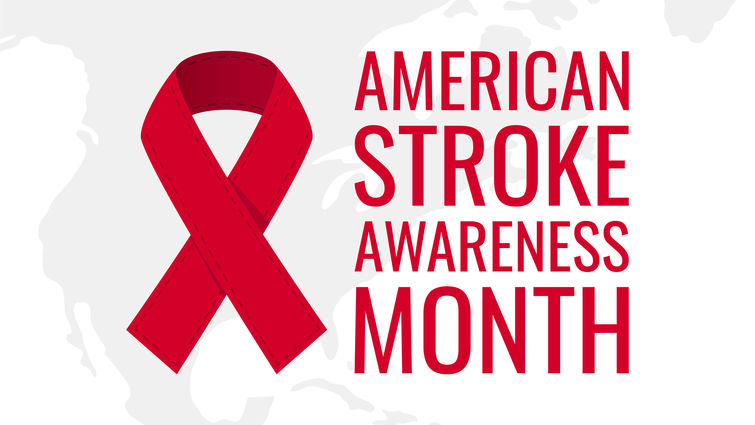
Someone in the United States has a stroke every 40 seconds, according to the Centers for Disease Control and Prevention (CDC). Stroke can occur at any time to a loved one, a friend or a coworker. This neurological attack kills 140,000 people annually in the United States, making it the 5thleading cause of death. Considering the impact stroke can have on loved ones and the reoccurrence of stroke in news headlines, how much do you know about stroke?
For National Stroke Awareness month, Vincent V. Truong, MD, medical director of Loma Linda University Health Comprehensive Stroke Center, shares these six key facts that can be helpful to know about stroke.
- Stroke Prevention 101. Up to 80% of strokes can be prevented through lifestyle changes to control your risk factors. Common lifestyle and risk factors include high blood pressure, high cholesterol, diabetes, poor diet, smoking and low levels of physical activity. Routine exercise and a healthy diet are key to stroke risk reduction, Truong says. The American Stroke Association recommends at least 40 minutes of moderately intense exercise for most days of the week and a diet containing five or more servings of fruits and vegetables per day to reduce the risk of stroke.
- Time is tissue. Symptoms of stroke can be spotted early on. In some cases, such as a Transient Ischemic Attack (TIA) or “mini stroke” the symptoms can be very mild but not less risk of damage to the brain. Truong says the best thing you can do if you suspect a stroke is to call 911. “Stroke treatment and effectiveness is really time-dependent, so the earlier the patient arrives to the hospital the better the outcome,” he says. He also recommends the helpful acronym BEFAST to spot stroke. This stands for Balance changes/unstable balance; Eyesight change/blurred vision; Facial droop; Arm/leg weakness; Slurred speech; Time to call 911.
- What is acute treatment? This is treating the stroke as it happens. Depending on the type of stroke, early treatment uses medications such as tPA (clot buster) or surgical procedures such as clot removal to help minimize brain damage. Other treatments focus on limiting complications, preventing additional strokes and stabilization.
- Road to Recovery. The timeline for stroke recovery and treatments varies depending on the severity of the stroke. According to Truong, research shows the timeline between 3-9 months from the stroke event, with patients showing improvements early on and well after that period. “The first thing I tell my patients is stroke recovery usually takes time,” Truong says. With that in mind, the rehabilitation process can look like this: •Acute In-patient therapy: This occurs when the stroke patient is institutionalized in a rehab facility. This is a more intense therapy set to help the patient transition to return home or outpatient therapy. •Home & Out-patient therapy: Certain patients may have therapy in their homes or at an outpatient rehab facility 1-2 times a week over the course of several months. During this time, the patient undergoes therapy that is focused on what they need the most help with, such as speaking or motor functions. Additionally, they’ll receive stroke prevention tips and education to make lifestyle changes to reduce their risk factors. “In terms of stroke prevention, the most important thing we need to be aware of is what caused the stroke,” Truong says. “The stroke has happened — from there we have to focus on preventing another stroke. That starts with addressing the cause and treatment through medications and lifestyle changes.”
- What is a Comprehensive stroke center? To be designated, a medical center has to meet multiple rigorous Standards in accordance with the Joint Commission as well as the American Heart Association’s and American Stroke Association’s Heart-Check mark for Comprehensive Stroke Center Certification. In short, it’s the highest comprehensive level of stroke center certification. Loma Linda University Health is the first and the only Joint Commission certified comprehensive stroke center in the Inland Empire. “Stroke patients can have lifelong care and support at our facility,” Truong says. “At our campus alone, we are able to provide the full spectrum of stroke care from acute management, to rehabilitation, prevention, follow-up and counseling.”
- Find your support circle. Like your physical care, your mental care after a stroke is just as important. Stroke survivors, their families and their caregivers often need to make life-altering adjustments following a stroke. It’s reported that one-third of stroke patients suffer from post-stroke depression. According to Truong, connecting with other survivors through support groups can have a positive impact on recovery. “In a support group setting, patients have the opportunity to share their experience with survivors, and they can learn from them,” Truong says. Equally, family support is just as important to recovery. Truong urges families of stroke patients to learn more about stroke so they can recognize the complications, depressions and disabilities that can come with it and can help positively encourage the patient through recovery.
Suffering from a stroke can be a life-altering experience, but you don’t have to be alone. Know the signs, learn your risk factors and take active steps to preventing stroke today. You can learn more about the Comprehensive Stroke Center at Loma Linda University Medical Center by visiting the website or make an appointment by calling 909-558-2880. Stroke survivors are invited to meet every third Thursday of the month at Loma Linda University Health's Stroke/Aneurysm support group.
